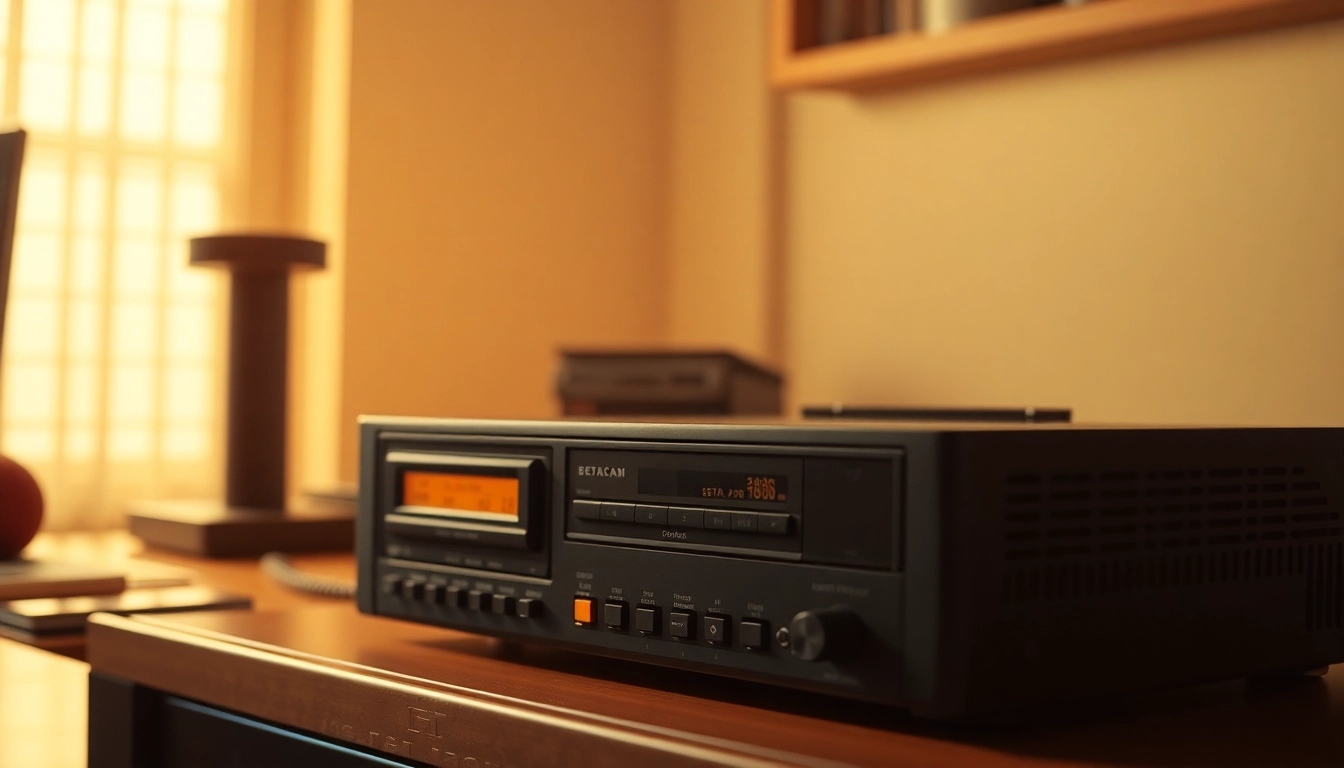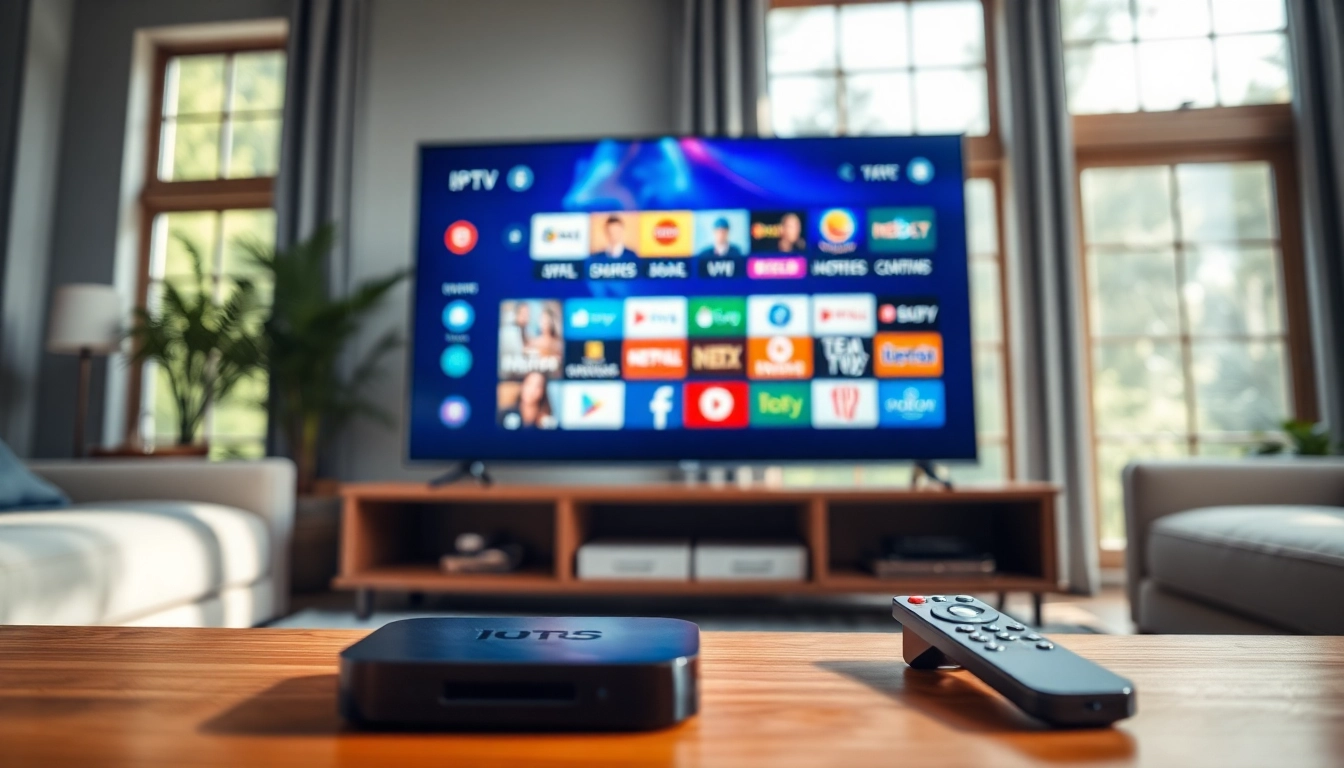Understanding Betacam Tapes and Their Importance
Betacam tapes have played a pivotal role in the evolution of professional video production since their inception in the 1980s. They were widely adopted in broadcast television and filmmaking due to their quality and durability. Today, as digital formats continue to dominate, the necessity to convert these tapes into modern digital formats has become increasingly critical. This process, known as Betacam to Digital conversion, not only preserves valuable content but also ensures accessibility in an era of rapid technological advancement.
What are Betacam Tapes?
Betacam is a type of magnetic tape format developed by Sony, widely used in the broadcasting industry for the recording of video and audio. The original Betacam format was released in 1982, designed primarily for professional use. Over the years, various iterations have emerged, including Betacam SP, Betacam SX, and Digital Betacam (DigiBeta), each offering improvements in video quality, recording capabilities, and compression algorithms.
These tapes utilize half-inch magnetic tape with superior image quality compared to previous formats. Betacam tapes are renowned for their reliability and ease of use in video editing, contributing to their prolonged presence in the industry. The introduction of Betacam SP (Superior Performance) in the late 1980s significantly enhanced the in-field response to changes in the broadcasting standards.
The Evolution of Betacam Formats
Since the launch of the original Betacam format, several variants have been introduced, each tailored to meet the evolving demands of the media industry. The subsequent Betacam SP format offered higher resolution and better durability, making it a staple in many production houses. Betacam SX brought advancements in compression techniques, allowing for longer recording times without sacrificing visual quality. These innovations played a significant role in how video content was produced and distributed, setting the stage for current digital recording technologies.
With the advent of Digital Betacam, the transition from analog to digital formats became evident. DigiBeta provided broadcasters with a more efficient workflow, enabling non-linear editing and enhancing the overall quality of video production. This evolution highlights the importance of converting older formats like Betacam into digital, as original tapes degrade over time, creating a risk of losing irreplaceable footage.
Why Digitize Betacam Tapes?
Digitizing Betacam tapes is essential for several reasons. First, it safeguards against the deterioration of physical tapes, which can suffer damage from humidity, temperature changes, and general wear and tear. Digitization ensures that the content remains preserved in a format that is easier to store, access, and share.
Moreover, digital files offer improved accessibility. Unlike Betacam tapes, which require specific playback equipment, digital formats can be easily viewed on computers, tablets, and smartphones. This accessibility facilitates easier sharing across various platforms, making it simple to reach broader audiences. Lastly, digitizing content is often necessary for compliance with evolving industry standards, which increasingly demand digital formats over analog ones.
Choosing the Right Betacam to Digital Service
Selecting a service for Betacam to digital conversion is a crucial step in ensuring the preservation of your media. Several factors should be considered to determine the best fit for your needs.
Key Factors to Consider
When searching for the right service provider, consider the following:
- Quality of Equipment: The technology used for conversion directly influences the outcome and quality of the digital files. Look for services that utilize high-end VTR decks tailored for Betacam tapes.
- Experience and Expertise: Inspect reviews and testimonials to gauge the provider’s experience in handling Betacam tapes, especially in terms of archival quality.
- Range of Formats: Determine whether the service can accommodate all types of Betacam tapes, including SP, SX, and DigiBeta, to meet your specific needs.
- Customer Support: Effective communication with the service provider is essential for addressing concerns or inquiries throughout the conversion process.
- Pricing Structure: While cost should not be the only determining factor, understanding the pricing structure relative to the services offered can help you make an informed choice.
Comparing Top Betacam Digital Transfer Services
Several contenders are noted for their Betacam to digital conversion services. For instance, Digitizing World is highly rated for its specially designed equipment and ability to handle bulk transfers. Smooth Photo Scanning is another provider well-known for comprehensive services that encompass various formats of Betacam.
Los Angeles Video Transfer and Videolab Solutions are also reputable, offering high-quality digital conversions with an emphasis on preserving the original media’s integrity. By comparing these services regarding quality, experience, and client reviews, you’ll be better equipped to choose the right service for your specific requirements.
Cost vs. Quality: Making the Right Choice
Achieving a balance between cost and quality is crucial when choosing a Betacam to digital conversion service. Cheaper options might be tempting; however, they may compromise on quality, using inferior equipment or rushed processes that could jeopardize the integrity of your media. On the other hand, investing in a reputable service can yield higher-quality outputs, ensuring that the video retains its original brilliance and minimizes the risk of loss due to poor preservation methods.
As a rule of thumb, seek out services that provide samples of their work or references from prior clients. This will give you insight into the quality you can expect, allowing you to make a more informed decision while considering your budget.
The Digital Conversion Process Explained
The process of converting Betacam tapes to digital files involves several detailed steps to ensure that the quality is maximally preserved. Understanding these steps can help you appreciate the complexities involved and assist in making informed decisions when selecting a service provider.
Steps Involved in Betacam to Digital Conversion
The conversion typically follows a structured process, which may vary slightly by service but generally includes the following steps:
- Assessment: The first step involves a thorough examination of the tapes to identify their condition and format, which aids in selecting the right equipment for the transfer.
- Cleaning: Before the transfer, the tapes and playback equipment are cleaned to prevent debris from affecting quality.
- Transfer: The tapes are played back on specialized VTR equipment that captures the video content and converts it into a digital format, usually MP4 or another widely accepted codec.
- Post-Processing: After the initial transfer, there often comes a post-processing stage where video quality can be enhanced through color correction, noise reduction, and stabilization.
- Delivery: Finally, the digital files are provided to the client, often on multiple platforms such as USB drives, cloud storage, or downloadable links.
Equipment Required for High-Quality Transfers
High-quality transfers rely heavily on the equipment used during the process. Industry-grade VTR decks are imperative for playback, as they capture the nuances of the original recording accurately. Tools such as decoders and encoders help facilitate the conversion to digital formats, ensuring the best possible preservation of the video quality.
Furthermore, professional editing software may be employed to enhance the video post-transfer, addressing any inherent issues with the original recording, such as lines, scratches, or color drift.
Common Issues and Solutions during the Process
During the Betacam to digital conversion process, several challenges may arise, impacting the quality of the end product:
- Tape Deterioration: Poor tape condition can lead to video dropouts or artifacts. Implementing careful handling and the use of excellent playback equipment can mitigate these effects.
- Audio Sync Issues: In some cases, audio may become out of sync during playback. This can be corrected manually during the editing process.
- Loss of Color Fidelity: It is essential to maintain accurate color reproduction during the transfer. Utilizing high-quality equipment can help achieve true color accuracy and prevent color degradation.
Preserving Your Converted Content
Once your Betacam tapes have been successfully converted to digital files, understanding how to manage and preserve these files effectively is essential for long-term accessibility and quality.
Best Practices for Digital File Management
Managing digital files efficiently can be a daunting task without proper organization. Start by implementing a systematic filing structure that allows easy access to your media. Naming conventions can also help in quickly identifying file contents, such as date, project name, and format type.
Regularly update and audit your digital archives to ensure files remain intact and usable. This includes checking for corrupted files and making appropriate backups.
How to Store and Backup Digital Files
When it comes to storage, consider using a diverse array of options. Cloud storage offers flexibility and remote access, whereas external hard drives provide robust physical backups. Keep multiple copies stored in different locations when possible, as this adds an extra layer of security against data loss.
Lastly, establish a routine schedule for backing up your files to prevent any potential loss due to hardware failure or accidental deletions.
Sharing Your Betacam to Digital Converts
Sharing your digital content is as important as preserving it. The digital files can be shared quickly across various platforms, enabling you to distribute your media to clients or audiences worldwide. Consider using secure file sharing services that protect your content while providing easy access.
Furthermore, tailor your delivery format to your audience; for archival purposes, high-quality formats like ProRes or DNxHD may be preferable, while for general viewing or distribution, standard formats like MP4 suffice.
Future-Proofing Your Media Collection
As technology continues to evolve, ensuring that your media collection remains relevant calls for strategic planning and staying informed about trends in video formats and storage solutions.
Upgrading Your Digital Format
In the digital realm, file formats and codecs can quickly become outdated. Regularly assess your media formats, paying attention to advancements in technology and industry standards. Upgrading files to newer formats can enhance compatibility and accessibility while preserving quality. Emerging formats may offer better compression and playback capabilities that can greatly benefit your archive.
Trends in Video Formats and Storage Solutions
Staying abreast of trends in video production and storage is vital for any media archivist. Formats such as HEVC (H.265) allow for better storage efficiency, while advancements in cloud storage technology provide new ways to access and archive data. Always be prepared to adopt new solutions that align with the changing landscape of media consumption.
Maintaining Quality over Time: What You Need to Know
Finally, to maintain the quality of your archived digital media over time, ensure that you remain proactive about technology upgrades and file management practices. Digital files can degrade over time due to technology obsolescence, so periodically refreshing your files is essential. Develop a strategy for evaluating the integrity of your archives and form plan for maintaining their quality and accessibility.
In conclusion, transitioning from Betacam tapes to digital formats is not merely about preservation; it involves strategically navigating the complexities of technology while ensuring the enduring accessibility and quality of your valuable media collection. By embracing best practices around conversion, management, and forward-thinking strategies, both individual users and professionals alike can safeguard their rich legacies in an increasingly digital world.



